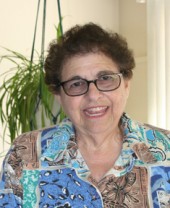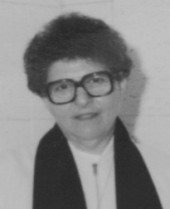 Reverend Florine L. Fleischman
Reverend Florine L. Fleischman
Profile by C. Todd White
May 01, 2005
Florine L. Fleischman moved to Huntington Beach, California from Florida in 1956. She became active with the women’s movement soon after, frustrated that women were treated as second-class citizens.
At this time, women in southern California were not allowed to work more than eight hours in a day, meaning that men earned all of the overtime work. Women were also prohibited from owning bars except through their husbands, which complicated things for lesbians.
Fleischman had attended the University of Tampa in the 1940s. It was a conservative school, but she had met other gay men and lesbians and found community there that she found very appealing. Tampa had three gay bars at the time, where gay men and women could gather and meet. “We had a camaraderie among us that was just wonderful,” she told me, referring to how men and women worked together in those days against Tampa’s notoriously anti-gay vice squad.
She was disappointed to find that those working for homosexual rights in Los Angeles were not so well integrated. She attended some of the Sunday afternoon meetings at ONE Incorporated’s Venice Street office but felt that the organization was “off limits” to her. She found ONE’s business manager, W. Dorr Legg, to be particularly “unfriendly” to her and to most other woman.
Fleischman met writer and schoolteacher, Betty Perdue, who lived next door to Jim Kepner in the steep hills of Echo Park. In 1963, Fleischman and Purdue formed a gay women’s group, a clandestine association largely composed of other schoolteachers that met every other Sunday at Fleischman’s Huntington Beach home. The women gathered in secrecy, using pseudonyms for protection and referring to themselves only as “the women’s group.”
This organization grew to become the Manhattan Beach chapter of the Daughters of Bilitis [DOB], a San Francisco-based women’s organization that had been started in 1955 by Del Martin and Phyllis Lyon. Fleischman came out openly as a lesbian through her work with the DOB, but she lost many of her conservative friends in the process.
Fleischman became active with the Council on Religion and the Homophile soon after its formation in 1965. For the next five years, she worked through the Council to represent and defend lesbians and gays to the hostile public, her fellow clergy, and the press.
In 1971, Fleischman joined the first Metropolitan Community Church, located in Huntington Park in Los Angeles. She began to study for the ministry and was awarded a Bachelor’s degree in Theology by Samaritan Theological Institute in 1979.

She became licensed by the MCC in July of 1983 but split with that organization the following year to form New Hope Christian Church in Van Nuys. This, she believes, has been her most valuable contribution to the homosexual movement.
Fleischman’s new church took in those that other churches would not, including “the poverty stricken, the mentally unstable, and those who had been touched by tragedy and no longer felt like a part of any community.” Fleischman kept her church together for 15 years, and through the process she helped to create and nurture an extended family of lesbians and gays.
God took care of us, and many people who came through our doors were helped not only with food but with love. They became part of our extended family.
To support herself financially through this time, she also worked as a real estate agent and an insurance claims investigator.
In 1994, Jim Kepner invited Fleischman to participate in the fifth annual Queer Frontiers conference, held at USC. The following year, she was elected onto the board of ONE Institute & Archives. She served as ONE’s President from 1998 until her resignation in 2000, reportedly due to health.
Rev. Fleischman reminds us that the most important accomplishments of the gay and lesbian movement to date have been through its success as a grass-roots movement. Today, the LGBT community has garnered the support of businesses, lawmakers, and many non-gays. She wants young people to remember that not that long ago, one could be thrown in jail for dancing with a person of the same sex, cross dressing in public, or simply holding hands with the person you love.
She feels that the most important battle yet to be fought, though, will be to unify and coordinate the men and the women of the movement.
Look at all the famous gay men who are remembered today. What woman can you remember? Thank God for those wonderful female pioneers such as Del Martin, Phyllis Lyon, Sandy Sandoz, Lisa Ben, Betty Purdue, Jeanne Cordova, and the owners of the early gay bars for women who defied the vice squad and the police.
Rev. Fleischman hopes that in the future, gay men and women will learn to work together so that we can work more effectively to secure and defend our rights and to become a more integrated and compassionate community.

 This page was created by C. Todd White from information gathered while researching his doctoral dissertation, Out of Many… A Social History of the Homosexual Rights Movement. Dr. G. Alexander Moore was director of White’s dissertation committee, in the Department of Anthropology at the University of Southern California.
This page was created by C. Todd White from information gathered while researching his doctoral dissertation, Out of Many… A Social History of the Homosexual Rights Movement. Dr. G. Alexander Moore was director of White’s dissertation committee, in the Department of Anthropology at the University of Southern California.